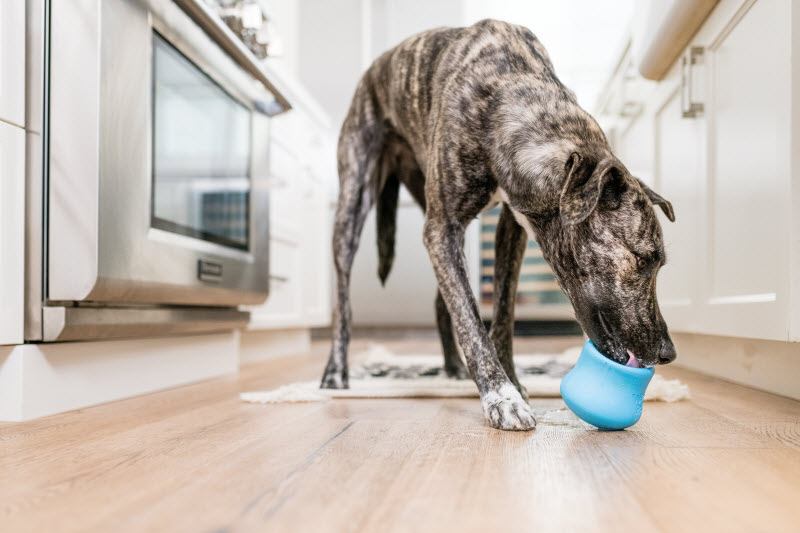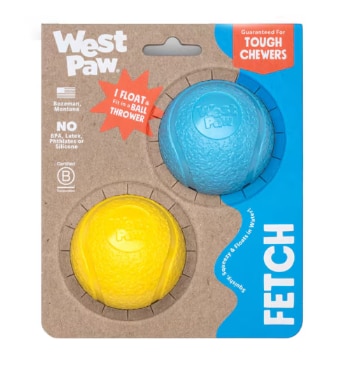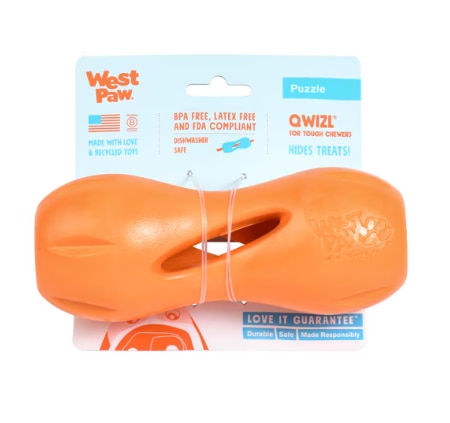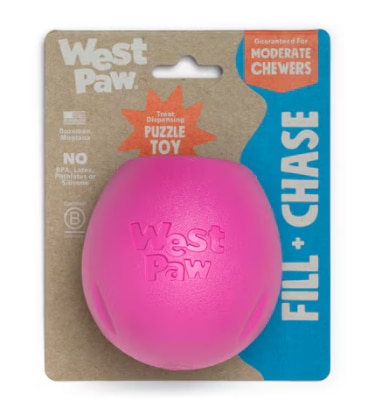Does your dog inhale his food? Do mealtimes last 30 seconds, max? What if slowing things down by just ten seconds could mean fewer vet visits, calmer behavior and a happier pet? Interactive dog toys, especially those that encourage slow feeding, transform everyday routines into more dynamic and rewarding experiences for your favorite canine.
Why enrichment matters
Pets weren’t designed to have food appear twice a day in gleaming stainless-steel bowls. In the wild, meals take work: foraging, hunting, competing. Interactive toys mimic some of that effort, engaging both body and mind. A puzzle to solve, a lick mat to explore or a feeder that rolls across the floor keeps pets sharp, busy, and satisfied.
The benefits go well beyond simple entertainment. Studies have shown that animals given enrichment tools display fewer signs of anxiety and stress. They’re less likely to engage in destructive behaviors and more likely to show curiosity and calm confidence. For owners, this translates into fewer chewed shoes and more relaxed companions.
Eating, fast and slow
Some dogs eat at a measured pace, but many seem to believe every meal might be their last and its incumbent upon them to scarf it down pronto. This “frenzied raccoon style” of eating is particularly common in rescue animals who once had to fight for scraps on the street. It’s an understandable survival instinct, but in a safe home, it can backfire.
Speed eating can have serious implications for your pet’s health. Gulped food often leads to regurgitation, vomiting and poor digestion. More dangerously, it raises the risk of gastric dilatation-volvulus (GDV), known as bloat, where the stomach twists and fills with gas. GDV is life-threatening and requires emergency surgery.
The good news is that habits can change. By forcing pets to take smaller bites and eat more patiently, slow feeders reduce these risks while making mealtime calmer.
Enter the slow feeder
A slow feeder is essentially a bowl or mat that introduces gentle obstacles between a pet and their food. Instead of inhaling an entire portion in one gulp, a dog has to nudge food around ridges, scoop it out of grooves, or lick it from textured surfaces. Some designs are as simple as shallow spirals; others resemble intricate mazes.
The point isn’t to frustrate the pet, but to slow the process down enough for chewing, swallowing and digestion to keep pace. Over time, dogs that once devoured their meals in seconds begin to settle into a more natural rhythm. Owners notice fewer episodes of choking, vomiting or gas, and pets themselves seem calmer once mealtimes are less frantic.
Slow food, better mood
The advantages stack up quickly. Smaller mouthfuls and more thorough chewing improve digestion and nutrient absorption. Because meals last longer, the stomach has time to send “full” signals to the brain, reducing overeating and helping with weight management. The reduced gulping also lowers the chance of choking and decreases the uncomfortable bloating that can leave a dog sluggish and miserable.
There’s also the behavioral side. Working through an interactive feeder requires focus, which provides much-needed mental stimulation for high-energy dogs. The repetitive action of licking, in particular, releases endorphins that help ease stress and anxiety. What starts as a solution to indigestion or bloat often doubles as a tool for keeping pets more settled and content throughout the day.
Interactive dog toys encourage interactive play
Not every enrichment tool has to revolve around mealtime. Treat-dispensing puzzle toys turn snacks into a game, and for many dogs, they’re just as valuable as slow feeders. These toys release food bit by bit as pets paw, nudge or roll them around. The challenge keeps pets engaged for much longer than a handful of biscuits tossed in a bowl.
Take West Paw, a dog toy company based in Bozeman, Montana. They designed the Rumbl to work as a durable, treat-dispensing toy that wobbles and bounces unpredictably. It makes dogs work for each piece of kibble, burning energy while satisfying their natural foraging instincts.
The Qwizl is ingenious, the perfect placeholder for bully sticks and dental chews that keeps dogs stimulated but unable to gobble their treat up. The Toppl Treat Toy does double duty: It functions as both a slow feeder when filled with meals and a puzzle when stuffed with smaller treats or frozen mixtures.
The beauty of treat-dispensing toys is that they bridge the gap between food and play. For dogs that need extra exercise, they encourage movement. For anxious pets, they provide focus and purpose, transforming idle energy into problem-solving. Even cats, often overlooked in the enrichment world, can benefit from puzzle toys that encourage them to bat, stalk, and “hunt” kibble.
Puzzle toys also create opportunities for bonding. Owners can watch, cheer and even guide their pets through the challenge, turning snack time into a shared experience. Over time, these small rituals strengthen the relationship between humans and their animals.
How to make the switch
Transitioning to slow feeding or puzzle play doesn’t have to be abrupt. Many owners start with one feeder meal a day, mixing in the regular bowl until their pet adjusts. Using high-value treats or smears of wet food helps spark interest. Supervision in the early days is wise, simply to make sure the dog isn’t getting frustrated.
Rotation also keeps the novelty alive. Switching between a mat, a puzzle bowl and a treat-dispensing toy keeps the challenge fresh, just as varying a workout routine keeps us engaged. The most important factor, though, is consistency. Over time, slow feeding and puzzle play shift from occasional gimmicks to natural routines that pets expect and enjoy.
Proof is in the payoff
Owners who commit to enrichment notice changes within weeks. Digestion improves, meals feel calmer, and frantic gulping diminishes. Weight stabilizes because overeating is less likely. Dogs prone to anxiety often seem more relaxed after working through a feeder or puzzle. And while no toy eliminates every risk, the reduced chances of choking, vomiting or bloat mean fewer stressful nights at the emergency vet.
Even better, interactive toys extend the benefits of slow feeding into everyday play. Pets that once burned energy by chewing furniture or barking for attention can now channel that drive into healthier, more gratifying outlets.
Fast eating can be a genuine health hazard, but it’s also one of the easiest issues to address. Interactive feeders and puzzle toys turn a dangerous habit into a satisfying one. For pets, that means safer, more enjoyable meals. For owners, it means peace of mind and, quite possibly, fewer vet bills.




